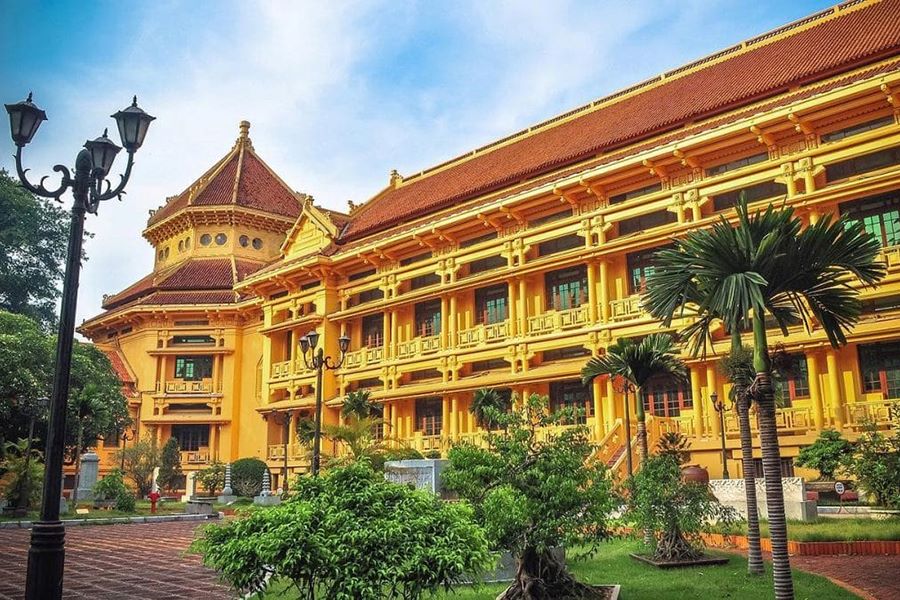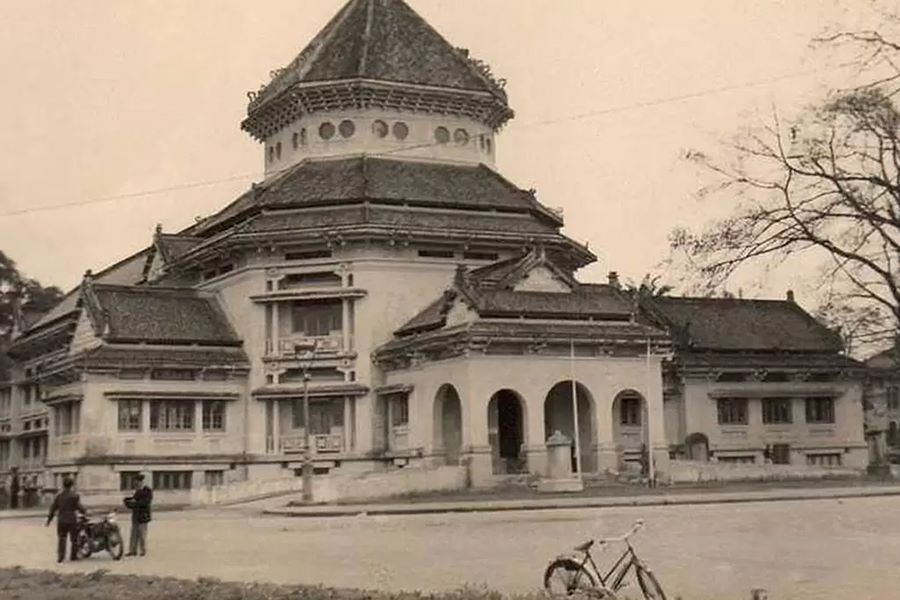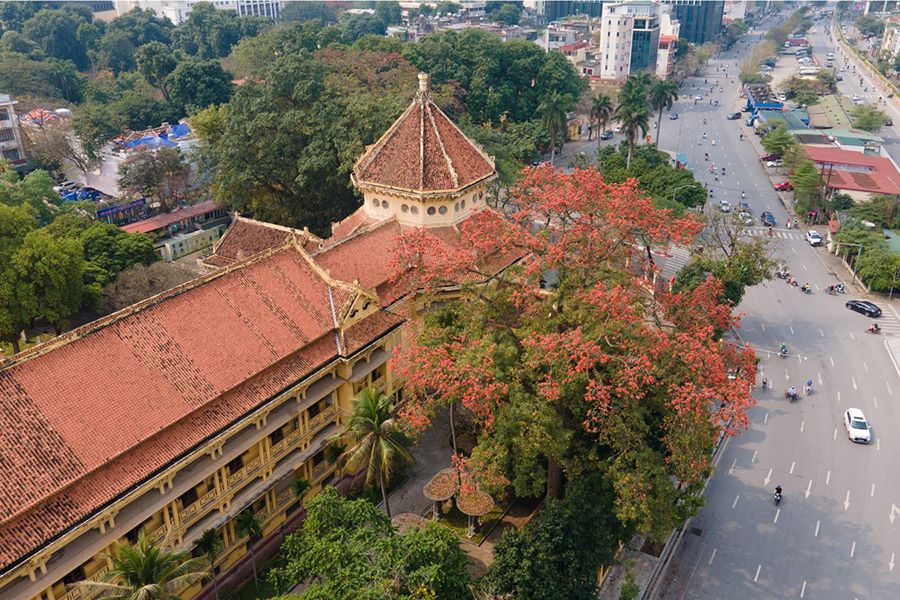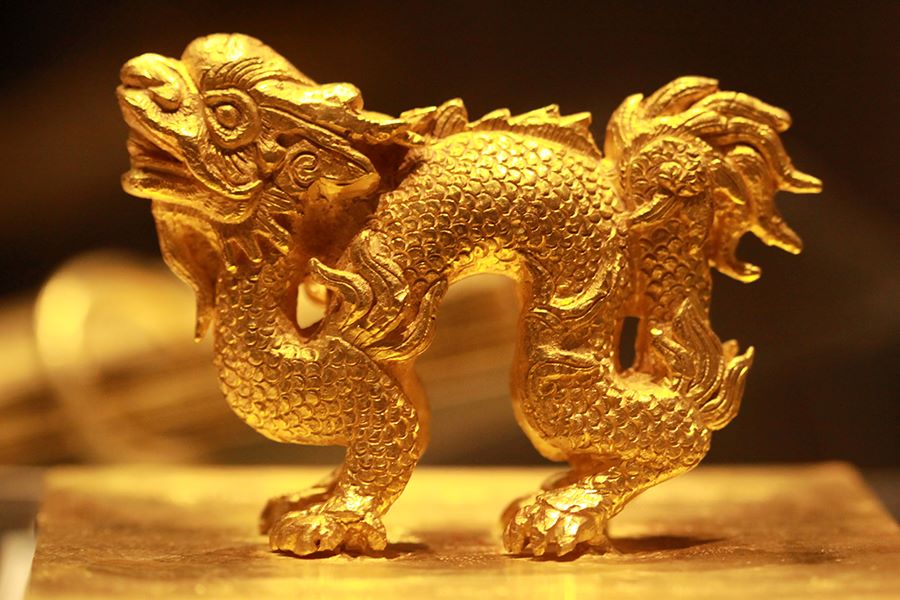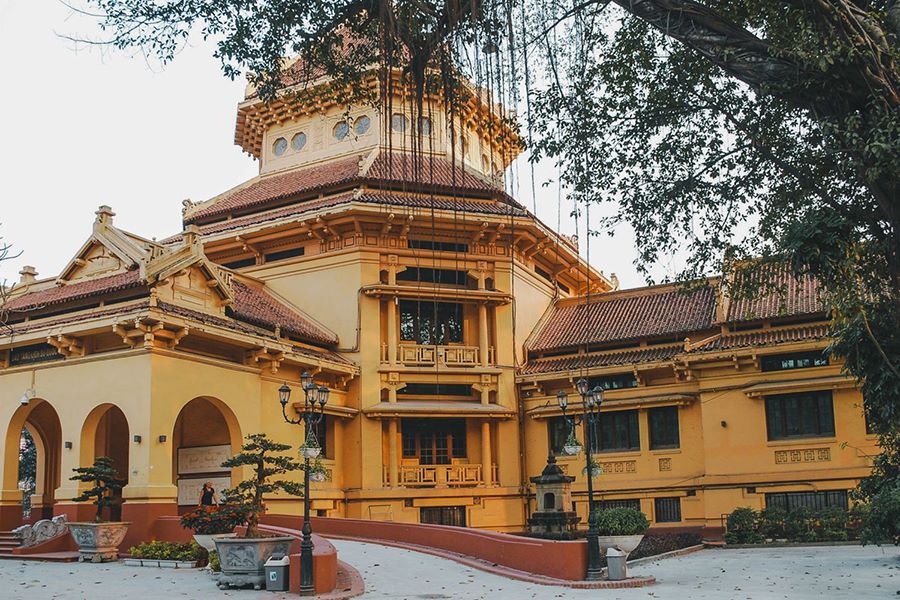Every visitor should have the opportunity to view the important historical and cultural relics of Vietnam at the Vietnam National Museum of History. Come hear the tale of Vietnam's 5,000-year history in an evocative Indochinese atmosphere. The Vietnam National Museum of History is the best venue to learn about Vietnam's rich cultural heritage and ancient history. An Indochina trip would not be complete without seeing this historic structure, which features priceless historical items and traditional Indochinese architecture.
Location of Vietnam National Museum of History
There are two locations of the Vietnam National Museum of History in Hanoi, both close to Hoan Kiem Lake:
- 216 Tran Quang Khai Street
- 1 Trang Tien Street
The Vietnam National Museum of History is easily accessible by various modes of transportation and convenient routes due to its central location. If you choose to travel by bus, you can get off at the Hanoi Opera House by using bus numbers 02, 34, 44, 49, and 51, or electric bus E07. You can park your car at the Pham Ngu Lao entrance if you drive or ride a motorcycle along the route Le Thai To - Hang Trong - Hang Khay - Trang Tien.
History of Vietnam National Museum of History
In 2011, the Vietnam National Museum of History was established. It has two distinct exhibition spaces: one on Trang Tien Street and one on Tran Quang Khai. These two buildings—the oldest museum in Hanoi and one of the city's oldest architectural structures—were constructed in 1917 and 1926, respectively.
At the moment, the Vietnam National Museum of History is home to a collection of approximately 200,000 records and artifacts that span the country's history from prehistoric times to the present. Compared to other museums in Hanoi with comparable themes, this one has a greater number of rare and valuable antiquities, as well as numerous national treasures. This figure explains why Hanoi's top museum, the National Museum of Vietnamese History, is regarded as such.
National Museum of Vietnamese History in Hanoi Reviews
The Architecture of Vietnam National Museum of History
The Vietnam National Museum of History is consistently ranked among the best sites to visit in Hanoi due in large part to its stunning architecture. The most striking features of this location are its vast area and exquisite Indochinese architecture.
The museum stands out in the center of the vibrant Hanoi city thanks to a big building with yellow paint, unusual green windows, and red roofs. The architecture is both ancient and vivid. Even after many years of growth and foundation, the museum still has the classic architecture of pieces that date back hundreds of years.
In addition to having a striking exterior, the National Museum of Vietnamese History in Hanoi has a distinctive interior. The central foyer features a striking octagonal design. The main exhibition area is an elongated rectangle that passes through the hall. It's a smart design that connects all of the rooms.
All in all, this building is quite distinctive yet also commonplace. It is unlike any other museum in Hanoi.
Exhibitions of Vietnam National Museum of History
Vietnam National Museum of History features two distinct display spaces: Vietnam from prehistory to the end of the Nguyen Dynasty (1945) is located at No. 1 Trang Tien Street, and Vietnam from the middle of the 19th century to the present is located at 216 Tran Quang Khai Street.
This location showcases a rich past, from the first human settlement in Vietnam to the protracted fight for freedom and the steady accumulation of an enormous cultural legacy via feudal dynasties.
The museum also features artwork produced by Indochina Fine Arts students during the French colonial era, Champa sculptures, and the entire collection of Oc Eo - Phu Nam cultural relics.
Furthermore, the museum's striking outdoor display space adds to its appeal. Various sophisticated sculptures and antiques can teach you more about Champa culture. Large inscriptions, statues, and worship structures from the Ly and Nguyen dynasties can also be found.
You will be able to read about Vietnam's difficult but inspirational history from 1858, when the French began invading the country until the US invaded and put an end to the Vietnam War in 1975. This ongoing display will depict what it's like to battle, labor, construct infrastructure, and get ready for the post-war development of the nation.
Additionally, there are more than a hundred authentic items that were given to the Vietnamese Communist Party and President Ho Chi Minh by both domestic and foreign residents.
Furthermore, the National Museum of History's front and rear yard areas showcase several large-scale artifacts with typical historical significance. The most notable is the automobile that the Communist Party of the Soviet Union donated to the Communist Party of Vietnam in 1954.
National Museum of Vietnamese History in Hanoi Travel Guide – Opening Hours – Ticket Price
Opening Hours & Ticket Price
- Morning: 8:00 - 12:00
- Afternoon: 13:30 - 17:00
- Adults: VND 40,0000/ person
Note that the museum is open every day but Monday. There will be a notice at the museum on significant holidays.
Regulations of Vietnam National Museum of History
Please take note of the following guidelines to ensure a trouble-free visit to the museum:
- Guided tours in Vietnamese, English, and French are available at the Vietnam National Museum of History. To make a reservation for a tour guide, go to the information desk by the entrance.
- Recall to show your ticket at the counter adjacent to the gallery entry, Counter One.
- Weapons, flammables, explosives, and poisons are prohibited inside the museum.
- Save your cash and jewels, and leave your bags in the museum locker.
- The museum does not allow eating or smoking.
- Keep your hands off the equipment and exhibits.
- There should be no noise in the museum area.
Vietnam National Museum of History has stunning architecture in addition to its historical significance. This location is unquestionably worthwhile visiting if you want to save your great moments and learn more about Vietnam's history and culture. Remember that Hanoi and Vietnam offer a lot of eye-catching places to see. Seize the opportunity to explore!

